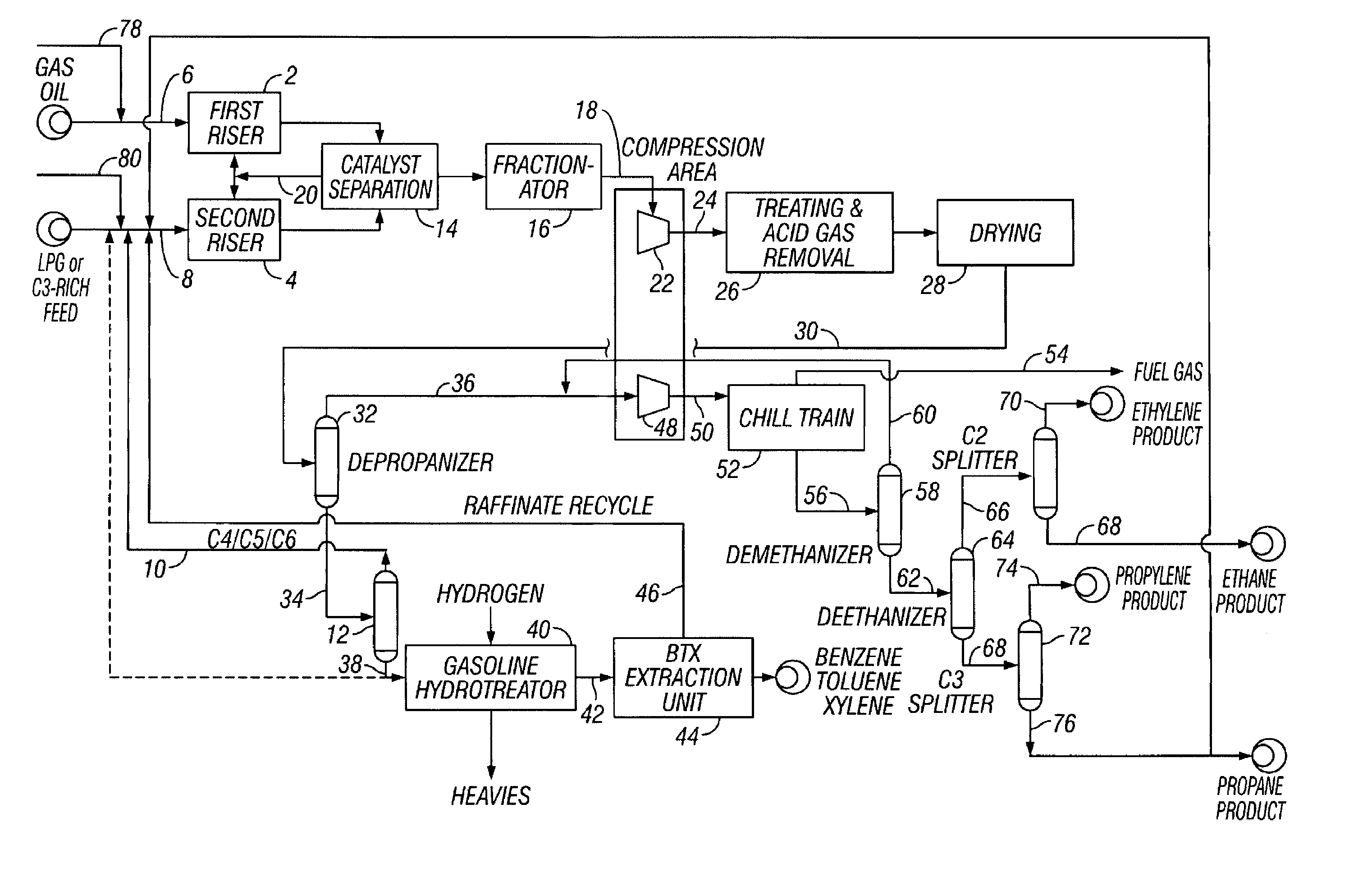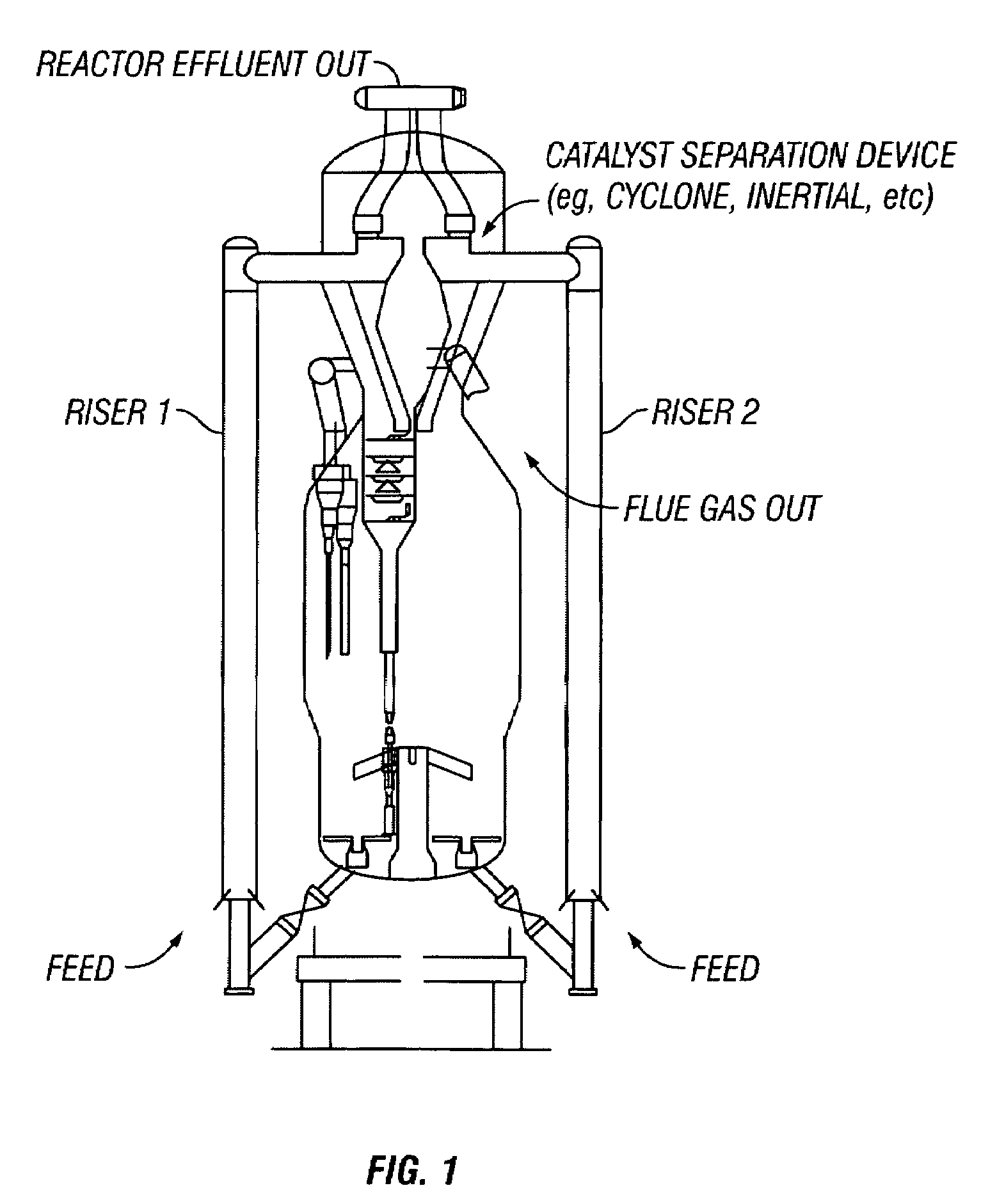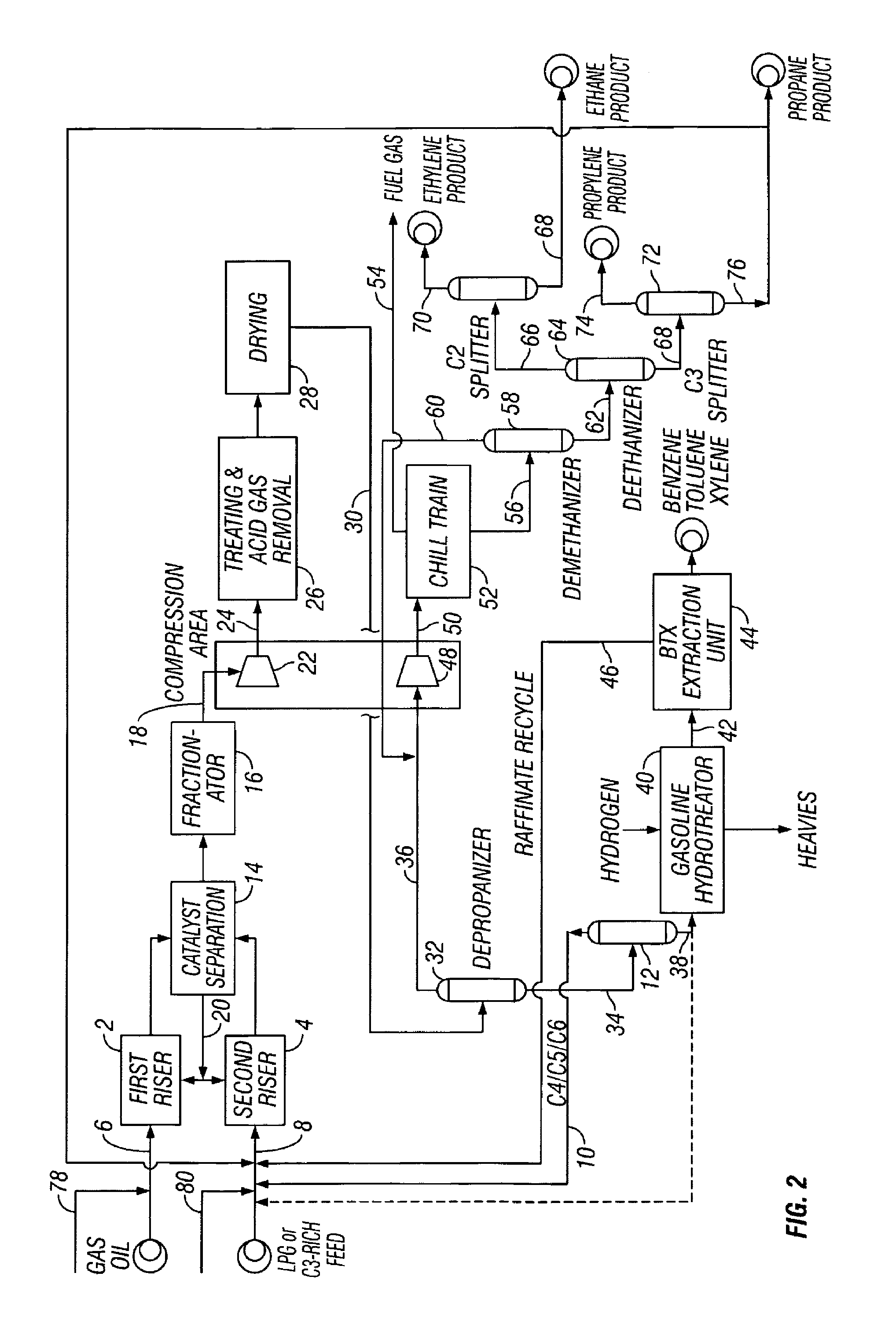FCC process for converting C3/C4 feeds to olefins and aromatics
a technology of olefins and aromatics, applied in the field of converting c3/c4 feeds to olefins and aromatics, can solve the problems of system heat imbalance, light feeds not making enough coke to maintain heat balance in the fcc unit, and more coke production
- Summary
- Abstract
- Description
- Claims
- Application Information
AI Technical Summary
Benefits of technology
Problems solved by technology
Method used
Image
Examples
examples
[0080]The following examples are based on a combination of laboratory tests, pilot plant tests and preliminary engineering calculations. The examples demonstrate the novel operation of the FCC process of the present invention in improving overall yields for aromatics from LPG by using a gallium-promoted alumina catalyst.
[0081]Example 1 summarizes the results of an experimental run that was carried out in a bench-scale reactor. Substantially pure propane (in gaseous form) was used as the reactant and was fed from a pressurized cylinder through a fixed bed reactor with and without gallium promotion.
[0082]The reactor was about 2 meters (about 7 feet) tall, and was essentially a ½″ schedule 40 stainless steel tube with an inside diameter of about 1.6 cm (about 0.62 inches). The whole reactor assembly was heated externally by electric coils wound around the reactor tube.
[0083]During the course of the reaction, temperatures, pressures and reactant / product gas flow rates were constantly mo...
PUM
| Property | Measurement | Unit |
|---|---|---|
| residence time | aaaaa | aaaaa |
| temperature | aaaaa | aaaaa |
| weight percent | aaaaa | aaaaa |
Abstract
Description
Claims
Application Information
 Login to View More
Login to View More - R&D
- Intellectual Property
- Life Sciences
- Materials
- Tech Scout
- Unparalleled Data Quality
- Higher Quality Content
- 60% Fewer Hallucinations
Browse by: Latest US Patents, China's latest patents, Technical Efficacy Thesaurus, Application Domain, Technology Topic, Popular Technical Reports.
© 2025 PatSnap. All rights reserved.Legal|Privacy policy|Modern Slavery Act Transparency Statement|Sitemap|About US| Contact US: help@patsnap.com



